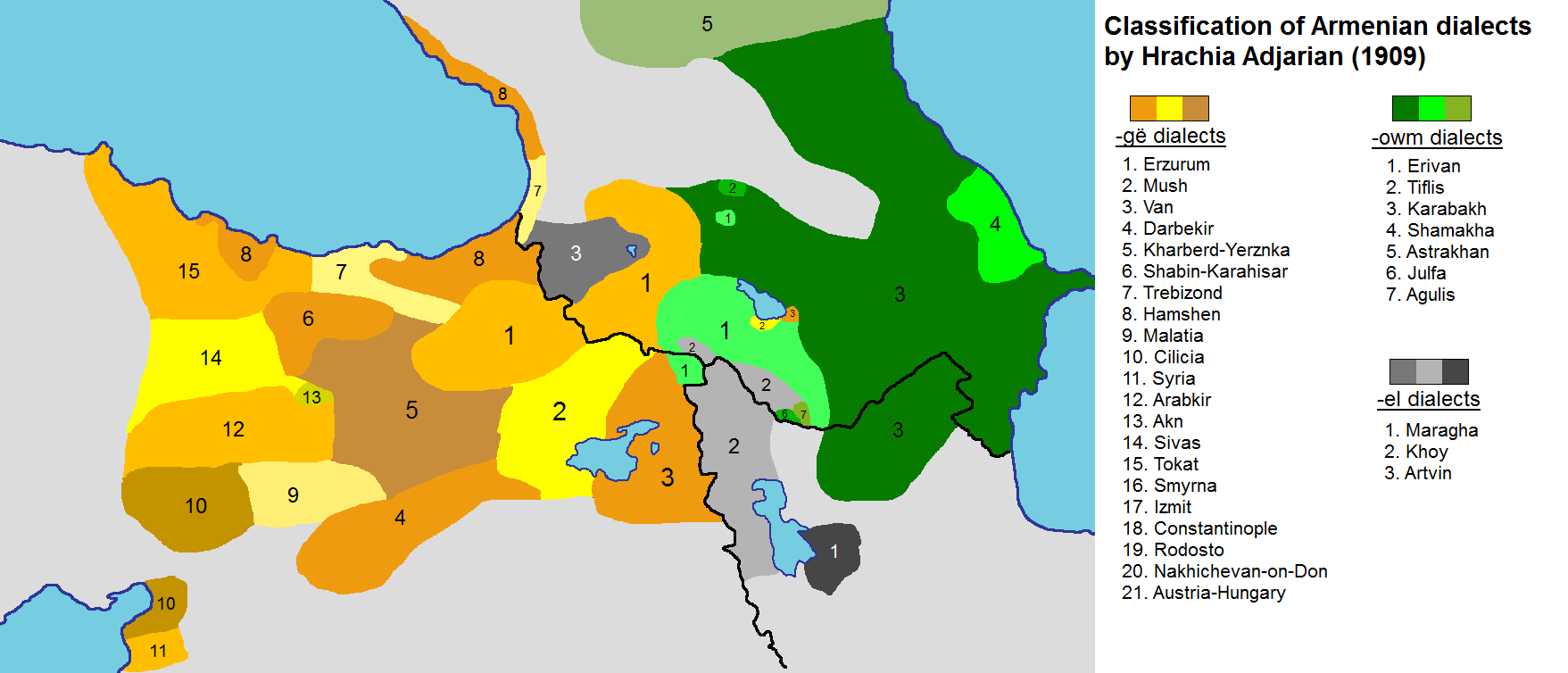Fact No. 38.
The modern Armenian language exists in two literary forms – Eastern and Western.
After a millennium and a half of serving as the written medium for communicating the Armenian language, Classical Armenian or Grabar (literally “literary” – “through using letters”, “written”) was gradually replaced over the course of the 19th century. As such, and naturally so, the spoken language had changed over the years. There had already been plenty of writing and publishing in what is called Middle Armenian, displaying an evolution in grammar and vocabulary from one region and one era to another.
When the moves to reform and modernise the language took place – also taking away the educational monopoly held so long within the Armenian Church – the Armenians were for the most part under two empires: the Ottomans in the west and the Russians in the east. As a result, two formal, literary, official versions of the Armenian language were developed. Western Armenian came to be based on the dialect of Constantinople (Istanbul), leading the Armenians of the rest of the Ottoman realm, while Eastern Armenian was based on the dialect of the Ararat plain, extending on to the Armenians of Tiflis (Tbilisi), who were not small in number, and were the wealthiest, most active Russian Armenians. Persian Armenians, it is worth noting, also use Eastern Armenian, though a rather distinct form when spoken. Collectively, modern Armenian is also referred to as Ashkharhabar (or Ashkharhapar in Western pronunciation, meaning “through/of the world”, that is, “worldly”, “laic”, not of the Church).
The two Armenians can be mutually-intelligible to Armenians with a strong enough grasp of the language(s). But, for most Armenian speakers, there is a real difficulty in understanding the spoken version of the other, due a lot to a regular difference in sounds. The grammars are also different, and vocabulary inconsistencies exist as well. In addition, Eastern Armenian underwent an orthography reform during Soviet times, so the spelling of Armenian in the Republic of Armenia and the former USSR is different than what is used in Western Armenian. Although the Armenians of Iran write Eastern Armenian, they too use pre-reform spelling almost exactly in the same way as in Western Armenian.
These differences, however, did not stop one prominent American cultural anthropologist (who, admittedly, had an Armenian son-in-law) from expressing the idea that Armenian could be used as an international language. Margaret Meade (1901-1978) brought forth that thought in the context of the United Nations International Co-operation Year in 1965. Mead proposed using a natural language as an international standard – as opposed to, say, Esperanto, a well-known, artificial language, made specifically for international use. Now, it being the 1960s, neither super-power of the Cold War could accept any language immediately associated with either side for such use. Speakers of Armenian, however, could be found both in the Communist world and in the West, at the same time being speakers of most of the major languages on the planet.
Nothing came of that plan, of course. One cannot help wondering, though, that, if it did, whether Eastern Armenian or Western Armenian would have been chosen, or whether the literal meaning of “Ashkharhabar” would have come to an unimagined fruition.
To hear examples of the differences between Eastern and Western Armenian, watch this:
References and Other Resources
1. “On Margaret Mead’s Birthday”, Civilnet, December 16, 2013
2. Omniglot. “Armenian”
3. Nareg Seferian. “Western Armenian & Eastern Armenian – Pronunciation Differences”, 6 minutes.
4. Irene Thompson, Jon Phillips. “Armenian”, about world languages, May 16, 2013
5. Wikipedia: “Armenian language”
Follow us on
Image Caption
Distribution of Armenian dialects in the Ottoman and Russian empires, according to Adjarian’s Classification des dialectes arméniens, published in 1909; many dialects disappeared as a result of the Armenian Genocide and due to other demographic and social shifts of the 20th century.
Attribution and Source
By Yerevanci (Own work) [CC-BY-SA-3.0], via Wikimedia Commons
Recent Facts
Fact No. 100
…and the Armenian people continue to remember and to...
Fact No. 99
…as minorities in Turkey are often limited in their expression…
Fact No. 98
Armenians continue to live in Turkey…
Fact No. 97
The world’s longest aerial tramway opened in Armenia in 2010

